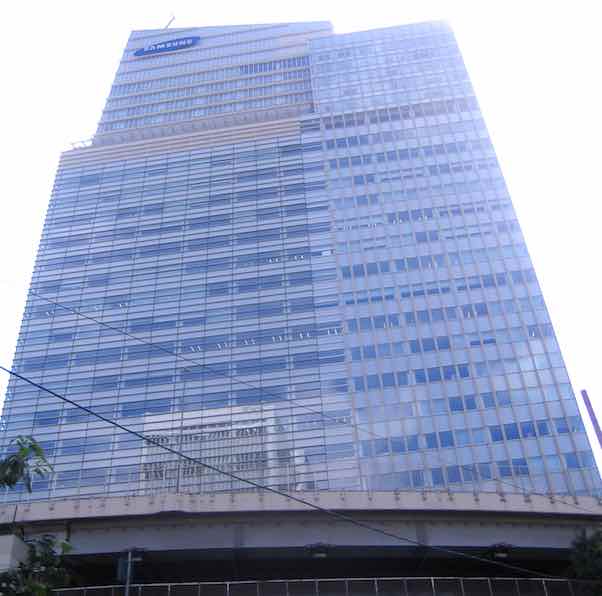
Samsung’s organizational structure (corporate structure) is designed to promote technological innovation throughout the multinational enterprise. Technological innovation is at the heart of the company’s strategies, as seen through rapid innovation involving smartphones and other consumer electronics. Structural facilitation contributes to the effectiveness of implementing Samsung’s generic competitive strategy and intensive growth strategies. This company structure is also a manifestation of the evolution of the business from a small trading firm into a diversified multinational enterprise that offers advanced technologies. Considering its organizational structure’s involvement in diverse operations, Samsung employs various operations management strategies for different markets and industries. The conglomerate’s organizational design and structural system covers various markets and industries related to the development and utilization of technologies, such as computing technologies. Effective market penetration and market development strategies are enabled through Samsung’s corporate structure, which also empowers competitive advantages to support business continuity and success in an increasingly saturated and aggressive competitive landscape.
Samsung Electronics and sister companies and subsidiaries form the organizational structure of the Samsung Group. In this internal analysis, it is illustrated that the business structure of the technology conglomerate is applied throughout its operations. For example, the organizational structural characteristics of Samsung Electronics are the same as the structural characteristics of the conglomerate. This consistency in the corporate structure helps streamline the company’s operations, especially in keeping its competitive advantages against many aggressive firms, including Apple, Google (Alphabet), Microsoft, Sony, Intel, Dell, Acer, and Lenovo.
Samsung’s Organizational Structure Type & Characteristics
Samsung has a product-type divisional organizational structure. This structure type uses product categorization as the basis for determining which resources and business operations belong to certain divisions, such as the company’s Device Solutions division. The entire company structure is unified via Samsung’s headquarters in Seoul. Strategic management directions from the corporation’s headquarters are implemented through strategic objectives specific to the structural divisions’ contexts, such as the context of the U.S. market for consumer electronics. Samsung’s corporate structure has the following main characteristics:
- Product-type divisions
- Centralized corporate hierarchy
- Geographical groupings
Product-Type Divisions. Samsung’s organizational structure’s main characteristic is its product-type divisions. Each division is a group of resources and operations that represent a product category, such as resources and operations for the production, distribution, and sale of consumer electronics. The corporate structure’s emphasis on technological innovation and product development in these divisions helps in achieving Samsung’s mission statement and vision statement. The technology conglomerate may add, merge, or disband divisions, depending on current business needs and the development of the organization, considering that further business diversification is possible. The following are the product-type divisions in Samsung organizational structure:
- Consumer Electronics
- Device Solutions
- IT & Mobile Communications
Centralized Corporate Hierarchy. Samsung’s corporate structure involves a hierarchical model, despite its product-type divisions. The corporate headquarters are the most notable manifestation of this hierarchy, which is part of an organizational design for ensuring that the conglomerate’s operations are unified and effectively directed towards growth and operational effectiveness. This characteristic of the organizational structure involves centralization of overall strategic planning through decision-making teams, groups, and departments, as well as vertical lines of command and authority that relay strategic directions from the headquarters to the daily operations in the Consumer Electronics, Device Solutions, and IT & Mobile Communications divisions.
Geographical Groupings. Samsung uses geographical groupings or divisions as a minor characteristic of its corporate structure. In the company’s organizational chart, these geographical divisions are generally under the product-type divisions. For example, Samsung Electronics North America is a geographical division within Samsung Electronics, which is a product-type division. Through this characteristic of the organizational structure, the company implements region-specific strategies, such as strategies intended for the North American market for Device Solutions.
Samsung’s Structure Advantages & Disadvantages
Advantages. Samsung’s corporate structure has the advantage of extensive support for product development, especially in terms of technology and innovation. This support comes through the structural framework of the conglomerate’s product-type divisions. Another advantage of this organizational structure is the company’s ability to fine-tune its strategies and operations based on market characteristics. This is possible through the geographical groupings or divisions within the product-type divisions, such as IT & Mobile Communications. These structural advantages and the strengths shown in the SWOT analysis of Samsung buttress the business against fierce competition. In this way, the organizational structure supports the company’s competitive advantage, especially against major competitors, like Apple.
Disadvantages. Samsung’s organizational structure has the disadvantage of the limited autonomy of the product-based divisions. For example, because of the centralized hierarchy, the product-based divisions need to follow strategic directives from the company’s headquarters in Seoul. Nonetheless, this structural hierarchy is necessary to keep Samsung’s entire organization unified toward its mission and vision involving superior technology and technological products. Also, the company structure presents challenges in expanding the business in regional markets, considering the low priority given to the geographical groupings. Nonetheless, Samsung’s organizational culture (corporate culture) helps in minimizing the negative effects of these structural disadvantages. Its current global success means that the technology company effectively uses the advantages of its corporate structure in spite of the disadvantages.
References
- Ben Zammel, I., & Najar, T. (2024). Nexus between technological capital, organizational structure and knowledge sharing in organizational restructuring initiatives. VINE Journal of Information and Knowledge Management Systems, 54(4), 896-915.
- Kornelakis, A., & Petrakaki, D. (2024). Technological innovation, industry platforms or financialization? A comparative institutional perspective on Nokia, Apple, and Samsung. Business History, 1-26.
- Li, W., Tian, R., & Chen, J. (2024). Original equipment manufacturer with remanufacturing: Outsourcing strategy and organizational structure. Transportation Research Part E: Logistics and Transportation Review, 187, 103575.
- Samsung – Our Business.
- Samsung Electronics US Executive Bios.
- Samsung Semiconductor Global Executive Leadership.